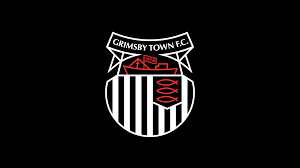
Grimsby Town FC
Grimsby Town FC is a storied football club with a rich history that spans over a century. Known affectionately as “The Mariners,” the club has a passionate fanbase and a compelling journey through the English football league system. This comprehensive article explores every facet of Grimsby Town FC, from its origins and historic achievements to its current standing, iconic players, and future prospects https://bet88.christmas/.
The History and Origins of Grimsby Town FC
Grimsby Town FC’s foundation traces back to the late 19th century, embodying the industrial spirit of the seaside town of Grimsby in North East Lincolnshire. Understanding this historical foundation helps contextualize the club’s identity, culture, and enduring significance within English football BET 88.
Early Beginnings and Formation (1878–1900)
The origins of Grimsby Town FC date to 1878 when local enthusiasts formed a club initially known as Grimsby Pelham. Soon after, the club adopted its current name, inspired by the maritime heritage of the town. During this period, football was gaining popularity across England, and Grimsby rapidly embraced the sport, establishing itself as a competitive team in regional competitions.
In the early years, the club played friendly matches before joining official leagues. Their first significant step was participating in the Lincolnshire League, which provided a platform for budding clubs to showcase their talents. The club’s early performances, characterized by tenacity and resilience, laid the groundwork for future success.
The Rise to Professional Football (1900–1930)
By the turn of the 20th century, Grimsby Town FC transitioned from amateur status to professionalism. They joined the Midland League, where they demonstrated consistent performance, culminating in their admission to the Football League in 1892.
The club’s early years in the Football League were marked by fluctuating fortunes, but notable achievements included winning the Second Division and earning promotion to the First Division. During this era, Grimsby became renowned for developing talented players who would go on to have illustrious careers.
This period also saw the club establish rivalries with neighboring teams, notably Scunthorpe United and Lincoln City, fueling memorable encounters and local bragging rights. The club’s growth mirrored the industrial expansion of Grimsby itself, fostering a strong community connection.
Notable Achievements and Challenges (1930–1970)
Between 1930 and 1970, Grimsby Town FC experienced both highs and lows. The post-war period saw the club stabilizing in the Football League, occasionally flirting with relegation but maintaining its professional stature.
One of the most significant successes during this era was the achievement of reaching the FA Cup quarter-finals, showcasing their competitiveness against top-flight teams. However, economic hardships, including the decline of the fishing industry—the town’s lifeline—affected the club deeply, leading to financial difficulties and periods of underperformance.
Despite these hurdles, the club nurtured legendary players such as Harry McDermott and Jack Frenkel whose contributions are still celebrated today. These decades set the stage for a resilient club culture rooted in community and perseverance.
Modern Era and Resurgence (1970s–Present)
Since the 1970s, Grimsby Town FC has undergone significant transformations. The club faced relegations, promotions, and managerial changes, yet its passionate supporters have remained steadfast. The late 1990s marked a notable high point with the club’s appearance in the Football League Trophy final and achieving promotion to higher divisions.

